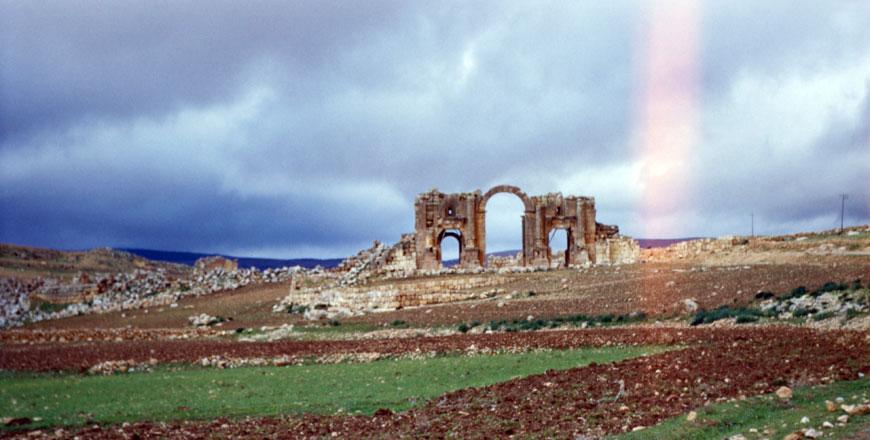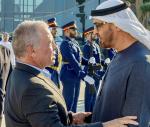You are here
Archaeologist urges research into old photo archives as ‘key tool’
By Saeb Rawashdeh - Feb 16,2019 - Last updated at Feb 16,2019

Amman Citadel in the 1930s (left) and nowadays (Photo courtesy of Stefano Anastasio)
AMMAN — Following in the footsteps of the first Italian archaeological expedition to Amman, which took place in 1927 on the Amman Citadel, an archaeologist came to the Jordanian capital in 2009 to draw a clear picture of the achievements made in almost a decade, mostly relying on old photo archives.
The initial research was re-established in 1929 by Renato Bartoccini (1893-1963) but the expedition was closed in 1938 due to geopolitical instabilities and the European crisis that led to World War II.
“The events of World War II played a key role in the fate of the excavation archive. It is not too daring to suggest that Bartoccini’s past as a fascist affected him and led him to definitely closing a hard and by then awkward period of his life,” said Stefano Anastasio, an archaeologist specialised in the Near East, in a recent interview with The Jordan Times.
Anastasio is still on the job, visiting Jordan now and then to pursue his goal of uncovering all the details about the job done by the Italian expedition.
He said that the documents relating to Bartoccini’s archaeological work were “most certainly associated with his political activity and ended up in a drawer. I was so lucky to retrieve all those documents, today held in some Italian universities [Perugia and Macerata, in particular], and it was therefore possible to reconstruct the history of the excavation”.
Recently, he has managed to access photos taken by Keppel Archibald Creswell (1879 -1974), a British expert in Islamic architecture, who took photos of Amman in the 1920s which are held at the Library of “Villa I Tatti” in Florence, Anastasio explained, adding that he compared Archibald’s and Bartoccini’s photos.
“In both cases, the results of the study were significant, because of the many data that can be inferred from these early photos: how the landscape where the monuments lie has changed; the state of the monuments prior to recent damage or destruction processes; the reconstruction of the provenance of archaeological items; the history of remakes and conservation interventions on a monument, if any — just to quote the main ones,” Anastasio outlined.
According to the scholar, “One could observe that this interest is partly attributable to the current state of archaeology: the ever diminishing amount of funds available for expensive field researches is a good reason for many people to shift [at least slightly] attention to archives! There may be some truth in this, but what counts is that this situation currently exists and that early photo archives are becoming a key tool for archaeological research. It is important to recall that early photos may be a powerful tool for protecting and promoting the value of archaeological heritage, especially in regions where unstable political situations and conflicts threaten the very existence of the monuments.”
However, any conflict is followed by a “reconstruction phase” as a rule, he continued, which involves also the cultural heritage management system.
“Therefore, early photos may help us to reconstruct the building history of a monument over time, and to allow careful and suitable restoration works of damaged monuments,” Anastasio noted.
In the meantime, Bartoccini’s archive has recently been published, the scholar elaborated, saying that he is working to publish Creswell’s photos of Amman.
“Today, many photos of Amman are available in several photo archives, especially in Europe and the USA. It would be important that such archive researches are carried out also in Jordan, where many other photo archives surely exist. They could surely enhance our knowledge of the sites. I do not know if I will carry on such a research, but it would be nice if other colleagues continue to look for these early photos,” Anastasio concluded.
Related Articles
AMMAN — The discovery of a new monument in Petra is an opportunity for archaeologists to further excavate plenty of undiscovered sites in th
AMMAN — In spite of the widespread destruction of cultural heritage, a team of experts and interns recently finished digitising a private ph
AMMAN — High above the Zarqa River, the mountaintop ‘Temple of the Serpents’ gives clues to the development of human communities during the















